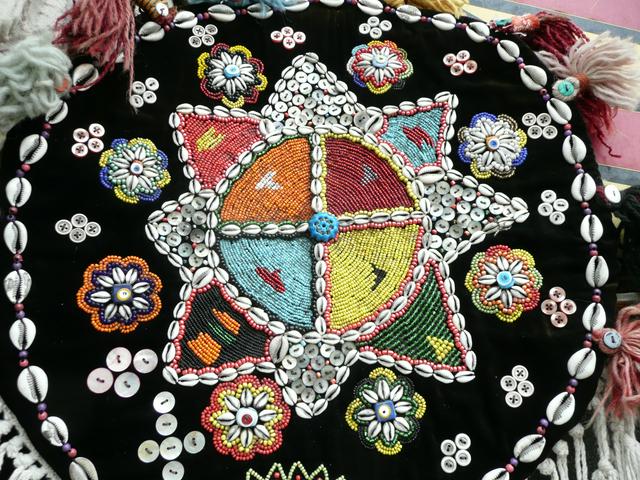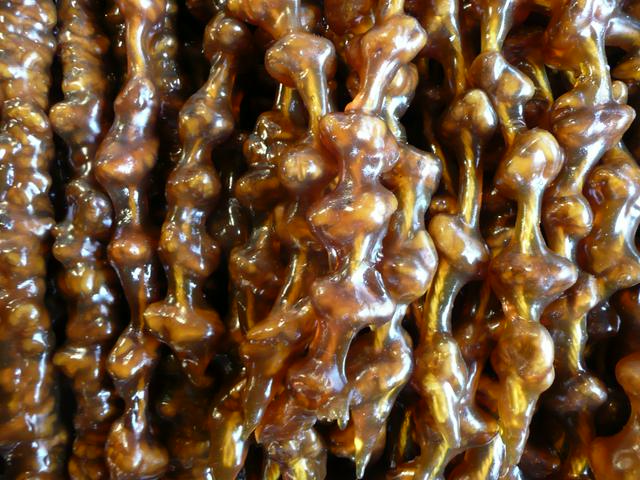Gaziantep is a city in Southeastern Anatolia.
Set in the western reaches of the Southeastern Anatolian plateau, Gaziantep is a surprisingly large (with a population of almost 2,000,000) and modern city.
Among the locals, the city is informally known by its old name, Antep. The honorific gazi (Turkish for "veteran"), now an official part of the name, was added in 1921 in honour of the fierce resistance of the locals against the French (who ruled the neighbouring Syria between 1920 and 1946) who occupied the city for a number of months in 1921, after the Ottoman Turkey and its allies lost the World War I. G.Antep, which can often be seen on some signs, is a compromise between the shorter, colloquial name, and the longer, official form.
- Archaeological Museum, Kamil Ocak Caddesi 2, Şehitkamil (Corner of Kamil Ocak Caddesi and İstasyon Caddesi, just south of train station, +90 342 324-88-09. Tu-Su 8:30AM-noon 1PM-6PM (May-Sep); Tu-Su 8AM-noon 1PM-4:30PM (Oct-Apr). This local archaeological museum, which also has a small cafe inside, is wheelchair accessible. 2 TL.
- Gaziantep Castle. First built by the Romans this castle was a major battle ground during World War I as well as the Turkish War of Independence. The museum showcases this well, even if the talk on national heroes might come off as a little too detailed and boring for non-Turks. The view from the top of the castle is worth the entrance itself. 1 TL, 0,50 TL for students.
- Cuisine Museum, Karagöz Mah, Sadık Dai Sok No:16 (South of the castle, there's many hard-to-miss signposts, +90 342 232 6616. Interesting museum on traditional Turkish cuisine and tools used for food preparation. 1 TL (0.50 TL for students).
- Zeugma Mosaic Museum, Hacı Sani Konukoğlu Blv, +90 342 325-27-27. Tu-Su 09:00-17:00 (Apr-Oct), 09:00-17:30 (Nov-Mar); last entry: 16:30. Opened in 2011, Zeugma Museum hosts stunning mosaics excavated at the nearby Zeugma (50 km east of Gaziantep), a city of antiquity known for its pontoon bridge crossing the Euphrates, and is now submerged under the waters of the Birecik Dam. 8 TL.
- St. Mary's Armenian Church. Grand old Armenian Church with white stone walls with black checkered edges. The church was converted to Kurtulus Mosque after the Armenian Genocide but architecturally remains nearly intact. Right in the center of the city.
Archaeological Museum, Kamil Ocak Caddesi 2, Şehitkamil (Corner of Kamil Ocak Caddesi and İstasyon Caddesi, just south of train station, +90 342 324-88-09. Tu-Su 8:30AM-noon 1PM-6PM (May-Sep); Tu-Su 8AM-noon 1PM-4:30PM (Oct-Apr). This local archaeological museum, which also has a small cafe inside, is wheelchair accessible. 2 TL.
Gaziantep Castle. First built by the Romans this castle was a major battle ground during World War I as well as the Turkish War of Independence. The museum showcases this well, even if the talk on national heroes might come off as a little too detailed and boring for non-Turks. The view from the top of the castle is worth the entrance itself. 1 TL, 0,50 TL for students.
Cuisine Museum, Karagöz Mah, Sadık Dai Sok No:16 (South of the castle, there's many hard-to-miss signposts, +90 342 232 6616. Interesting museum on traditional Turkish cuisine and tools used for food preparation. 1 TL (0.50 TL for students).
Zeugma Mosaic Museum, Hacı Sani Konukoğlu Blv, +90 342 325-27-27. Tu-Su 09:00-17:00 (Apr-Oct), 09:00-17:30 (Nov-Mar); last entry: 16:30. Opened in 2011, Zeugma Museum hosts stunning mosaics excavated at the nearby Zeugma (50 km east of Gaziantep), a city of antiquity known for its pontoon bridge crossing the Euphrates, and is now submerged under the waters of the Birecik Dam. 8 TL.
St. Mary's Armenian Church. Grand old Armenian Church with white stone walls with black checkered edges. The church was converted to Kurtulus Mosque after the Armenian Genocide but architecturally remains nearly intact. Right in the center of the city.
Visit the castle, explore the bazaars and don't forget the museum. There are a lot of museums in the center of city, especially some of them are close to castle. You should go Mosaic Museum (close to stadium), Medusa Museum (Glass Museum), Martyr's Museum, Dervishes Museum (Mevlevihane), Hasan Süzer Etnographia Museum.
 You can buy a lot of traditional things in Gaziantep. You should try Bakırcılar Çarşısı, a traditional bazaar in the center of the city. You can buy baklava, nargile (hooka pipe), yemeni (local leather shoes), among other things.
You can buy a lot of traditional things in Gaziantep. You should try Bakırcılar Çarşısı, a traditional bazaar in the center of the city. You can buy baklava, nargile (hooka pipe), yemeni (local leather shoes), among other things.
 Antep is known for its cuisine that is heavily influenced by its southern neighbours. The city is renowned for its local variety of kebab (Antep kebabı). You can find many places that sell spicy kebabs here. Make sure you enter a place that is crowded and order ayran with your kebab. Try a lahmacun, which is minced, marinated, spiced meat with minced vegetables on an extremely thin, crunchy dough. Lahmacun can be made with garlic or onions, in general, you will find garlic ones in Antep.Don't forget to try "dolma" and "sarma". Stuffed vegetables and wine leaves are tasty dish and it is vegan.
Antep is known for its cuisine that is heavily influenced by its southern neighbours. The city is renowned for its local variety of kebab (Antep kebabı). You can find many places that sell spicy kebabs here. Make sure you enter a place that is crowded and order ayran with your kebab. Try a lahmacun, which is minced, marinated, spiced meat with minced vegetables on an extremely thin, crunchy dough. Lahmacun can be made with garlic or onions, in general, you will find garlic ones in Antep.Don't forget to try "dolma" and "sarma". Stuffed vegetables and wine leaves are tasty dish and it is vegan.
As the centre of a large pistachio-growing region, as the groves along the highway leading to Gaziantep indicate, you can find many stores selling this local product (known in Turkish as Antep Fıstığı, i.e. "Pistachio of Antep", an expression which surpassed the former name of Şam Fıstığı, i.e. "Pistachio of Damascus", used during Ottoman period), both fresh (not very tasty, though) and also in a salty roasted variety (a lot tastier!). Try the spicy nuts.
 Upon finishing your dinner, make sure to have baklava made with pistachios. Also, you can try the hot desserts with a scoop of ice cream on top.
Upon finishing your dinner, make sure to have baklava made with pistachios. Also, you can try the hot desserts with a scoop of ice cream on top.
Antep is known for its food, and meals there are one of the highlights of visiting the region. So enjoy yourself.
Many of Antep's drinking establishments are basically for picking up women. However there are some nice birahanes ("beer-houses") where you can enjoy a quiet drink in peace.
From city's otogar you will find numerous agents selling tickets to dozens of destinations including Istanbul, Konya, Van, Dogubeyazit, and Antalya to name a few. Buses leave frequently. Shop around for the best price.
Urfa, the next major city to the east, is the obvious destination if you are heading that way. Somewhere around the Euphrates River on the way, you will find that it is time to say goodbye to the 'West', and be welcomed into the world of the 'East'. Even the language of choice on the streets will change, with the Turkish words thinning out more and more towards the east, even if you are still in Turkey.
Halfeti is a picturesque riverside old town in the northeast, off the highway to Urfa, partly inundated under a dam lake on the Euphrates.
However, before taking that direction, you might want to hit up to the north first, to Kahta for a visit to the Mount Nemrut, the summit of which is adorned with huge statues dedicated to the ancient gods.
If ancient statues scattered about the countryside sound interesting, the remote site of Yesemek near İslahiye (21 km southeast of İslahiye, 100 km southwest of Gaziantep) may also be worth checking out. This was a stone quarry used by the Hittites (a Bronze Age nation that was the first to found a state in Anatolia ever) as a statuary workshop. Later, it was abandoned and hence some of the half complete statues never made to the locations that they were intended to stand at first and dot the hillside of Yesemek instead since then.
